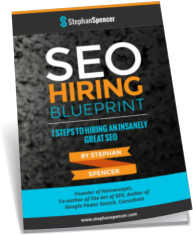Two of the most popular Web 2.0 interactive elements, Asynchronous JavaScript and XML (AJAX) and Flash, might be great for customers and a fresh experience on many sites, but they are inherently unfriendly to the major search engine spiders. In my article on Search Engine Land entitled, “The Search Engine Unfriendliness Of Web 2.0” I cover AJAX and Flash in detail, to show you how to prevent these new technologies from harming your ability to get the most out of Web 2.0.
Here are a few quotes from the article that might help those of you who employ AJAX and Flash into your blogs or websites. This next quote covers a great tip about Flash:
Google isn’t likely to make big improvements on how it crawls, indexes and ranks Flash files anytime soon. So, it’s in your hands to either replace those Flash elements with a more accessible alternative like CSS/DHTML or to employ a Web design approach known as “progressive enhancement,” whereby designs are layered in a concatenated manner to provide an alternative experience for non-Flash users. This way, all users, including search engine spiders, will be able to access your content and functionality.
In this quote, I talk about progressive enhancement’s alternative to work with AJAX:
Here, progressive enhancement renders a non-JavaScript version of the AJAX application for spiders and JavaScript-incapable browsers. A low-tech alternative to progressive enhancement is to place an HTML version of your AJAX application within noscript tags (see TheCleanerMovie.com for an example).
For more tips about how you can incorporate progressive enhancement, feel free to visit my article.

 SIGN UP FOR EXCLUSIVE WEEKLY CONTENT
SIGN UP FOR EXCLUSIVE WEEKLY CONTENT 


Leave a Reply